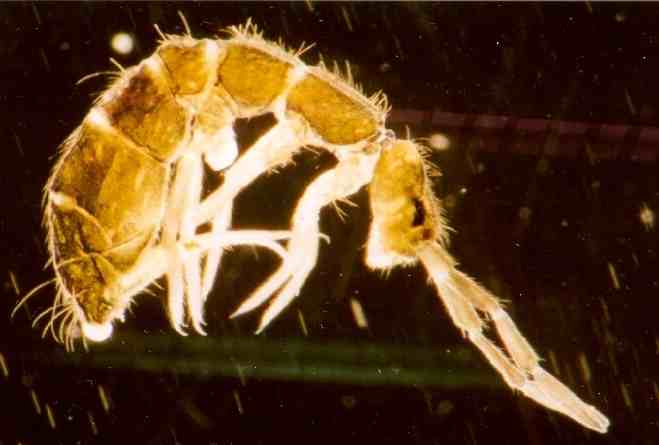 Springtails are minute, primitive, wingless insects classified in the Order Collembola. Over 6,000 species are found in most temperate and tropical habitats, where they figure importantly in the diets of Poison Frogs (Dendrobates, Phyllobates, Oophaga), small salamanders and newly metamorphosed amphibians of many kinds. Please see Part I of this article for information on procuring Springtails and their role in helping to save the nearly extinct Kihansi Spray Toad (Nectophrynoides asperginis).
Springtails are minute, primitive, wingless insects classified in the Order Collembola. Over 6,000 species are found in most temperate and tropical habitats, where they figure importantly in the diets of Poison Frogs (Dendrobates, Phyllobates, Oophaga), small salamanders and newly metamorphosed amphibians of many kinds. Please see Part I of this article for information on procuring Springtails and their role in helping to save the nearly extinct Kihansi Spray Toad (Nectophrynoides asperginis).
Rearing Springtails
While the care of tropical and temperate species may vary a bit, most Springtails do well at 72 F and a near 100% humidity level. I’ve raised several species successfully in both low, plastic terrariums and Petri dishes. When using terrariums, I cover the ventilation slots with plastic to maintain high humidity (enough oxygen will be retained in the terrarium for respiration).
Substrate
I use sand, peat moss and well-decayed leaf litter as a substrate. When gathering leaf litter, search below the top layer of leaves for the fine, mulch-like decayed material – this provides the Springtails with food as well as living space. The substrate should always be moist to the touch.
Diet
In addition to decaying leaves, Springtails should be fed yeast, moistened tropical fish flakes, carrot and apple. I’ve also experimented with damp spirulina disks.
Depending upon the species that you collect or purchase, you may need to modify the diet a bit – success has been had with foods ranging from grass cuttings and moldy bread to fungus-covered breakfast cereals.
Using Springtails
To simplify feeding, Springtails can be offered to your pets in a Petri dish. However, spreading them about in the substrate will provide great foraging opportunities, and will keep your frogs and salamanders occupied for hours. I often establish Springtail colonies in large terrariums and zoo exhibits populated with Poison Frogs; they feed upon decaying moss and frog droppings, and may develop huge populations – much to the delight of the frogs!
Further Reading
Please see Collecting Live Food: an Entomologist’s Technique.
for information on capturing other tiny insects for your smaller pets.
An interesting article on Springtail natural history, along with diagrams of their anatomy and notes on collecting techniques, is posted here.
Springtail image referenced from wikipedia and originally posted by de:Benutzer:Onychirus
 That Reptile Blog – Reptile, Amphibian and Exotic Pet Care and Information
That Reptile Blog – Reptile, Amphibian and Exotic Pet Care and Information


